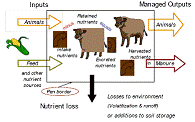Biological Systems Engineering
Date of this Version
1-1984
Abstract
The use of water for irrigation is receiving more scrutiny as supplies are reduced, competing demands emerge, and application costs increase. Improved water management in irrigation requires an accurate scheduling of irrigations. In areas experiencing limited water supplies, this may involve scheduling irrigations to obtain maximum return per unit of water applied. Other areas may require scheduling to limit deep percolation of water and other valuable nutrients.
The adoption of irrigation scheduling programs such as those described by Kincaid and Heermann (1974) has resulted in reduced application of water. These programs provide estimates of when and how much to irrigate by using daily weather data and other data related to the specific crop and soil situation under consideration. With irrigation scheduling, excessive irrigation can be reduced, considerable energy can be saved, and nutrients can be put to more efficient use.
A necessary requirement within the irrigation scheduling program is the accurate calculation of daily crop evapotranspiration (ET). The current methodology of estimating crop ET is the use of a potential or reference ET and a crop coefficient. The crop coefficient is an empirical ratio of crop ET to some reference ET, and is generally derived from experimental data. The crop coefficlents currently being used are generally presented as a function of time, usually as a percentage of elapsed time from planting to full cover for the first part of the growing season, and days after full cover for the last part of the growing season.
To provide a basis for directly relating the crup coefficient to crop development and to account for changes from normal weather conditions, field experiments to develop improved crop coefficients were conducted at two sites in Nebraska. The independent variables used to describe the crop coefficient were cumulative growing degree days and stage of growth. The crop coefficients presented in this report are daily basal values, representing conditions when soil evaporation is minimal, but the availability of soil water within the root zone does not limit plant growth or transpiration


Comments
Submitted to the U.S. Department of Agriculture, Agricultural Research Service.
Prepared under Project No. 58-9AHZ-9-454.
January 30, 1984